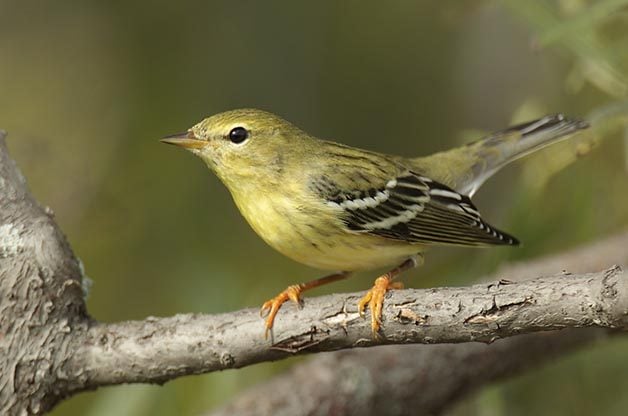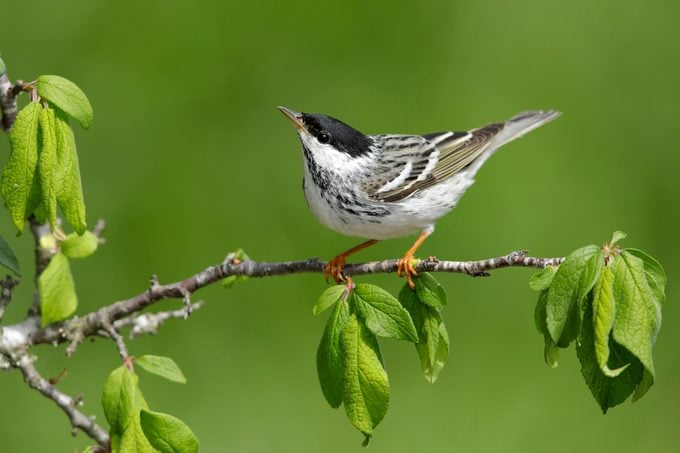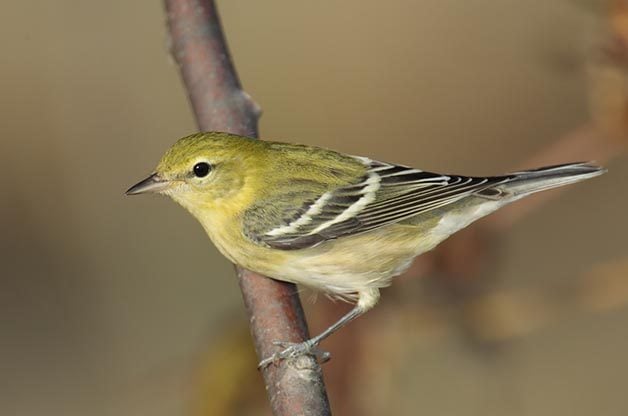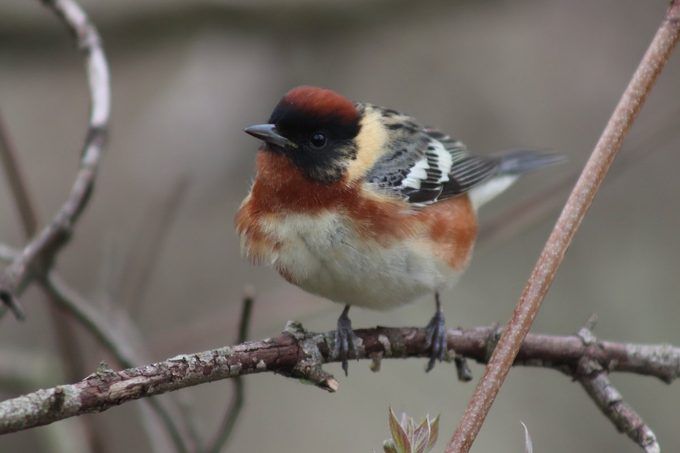Fall ID Tips: Blackpoll Warbler vs Bay Breasted Warbler
Updated: Oct. 14, 2021
Fall warblers can be very confusing. Learn how to tell the difference between the blackpoll warbler and bay breasted warbler.
Everyone loves seeing all the beautiful warblers in their breeding colors during spring migration but, seeing fall warblers can be just as much fun. The only trouble can be that some of the birds will cause more of an identification challenge during this time of year. One of the most common challenges is deciding if you’ve seen a blackpoll warbler or a bay breasted warbler. Although you would never mistake these two species in the spring, it can be quite easy to do in the fall.
Here are a few tips to help you with your fall warbler identification.

Blackpoll Warbler
Both the blackpoll warbler and bay breasted warbler are yellowish overall and have two white wingbars, so those features aren’t going to be very helpful. On the blackpoll warbler, look for very light and blurry dark streaking on the sides and across the breast. Also, if you can get a look at the legs and feet and they have any yellow on them, you have a blackpoll warbler.

To make things even more confusing, blackpoll warblers molt into completely different plumage in the fall. During the breeding season, these birds look much different—the males are black and white with a black cap.
For me, blackpoll warblers have the craziest migration pattern of any of the warblers. Here’s a fascinating fact: Blackpoll warblers fly for an impressive 80+ hours nonstop during fall migration. Their epic trip from northern Canada to South America includes nearly 2,000 miles across the open water of the Atlantic Ocean.
After breeding across the boreal forests of Canada and Alaska, the whole population migrates east towards the Atlantic Ocean. Once they reach the ocean, they will feed heavily in hopes of doubling their body weight and then take off and fly straight out over the open water heading east. They will rely on strong winds to push them south so that they can arc down to South America, at some points being closer to Africa than the American continents! Many of the birds will make landfall on the northeast coast of South America.
Their migration north in the spring will take them island hopping through the Caribbean and then through the central United States back to their breeding grounds in the north.
Yellow warbler vs goldfinch: Here’s how to tell the difference.

Bay Breasted Warbler
Unlike the blackpoll warbler, the bay breasted warbler doesn’t show much streaking at all. Instead, many times it will show a slightly creamy or buffy color. Some individuals will even show a hint of the bay color they are named for. Also note that this species has entirely black/gray legs and feet.

Like the blackpoll warbler, this species does a seasonal costume change. In the breeding season, these warblers are mostly gray with a chestnut colored head, throat and sides.
Next, learn all about black-throated blue (and green!) warblers.
